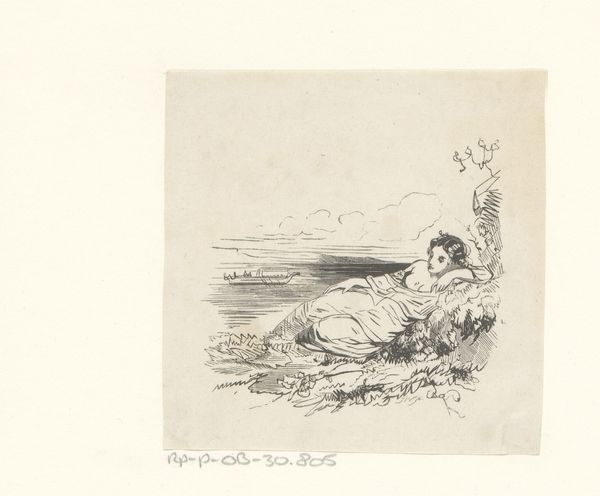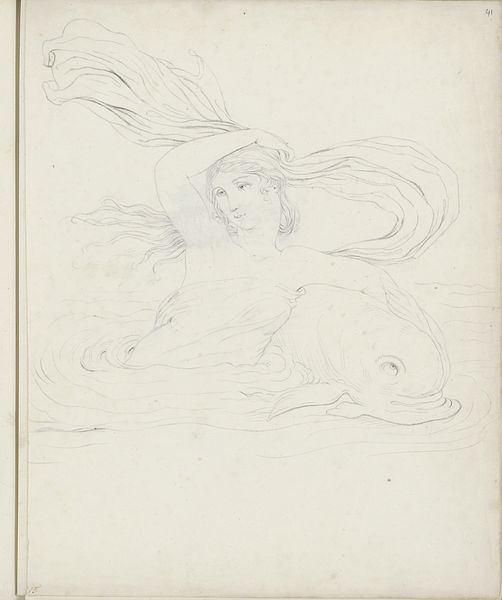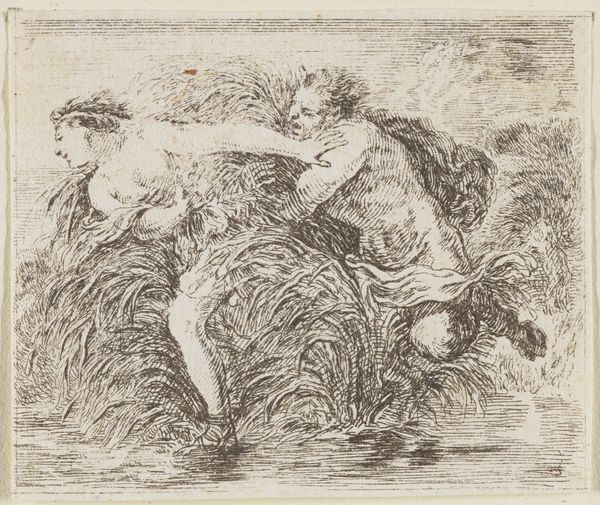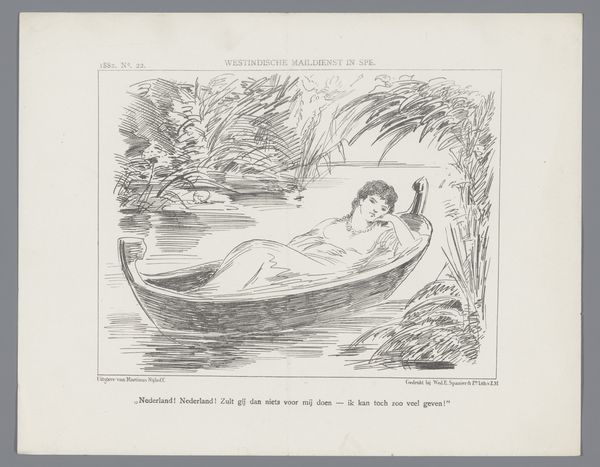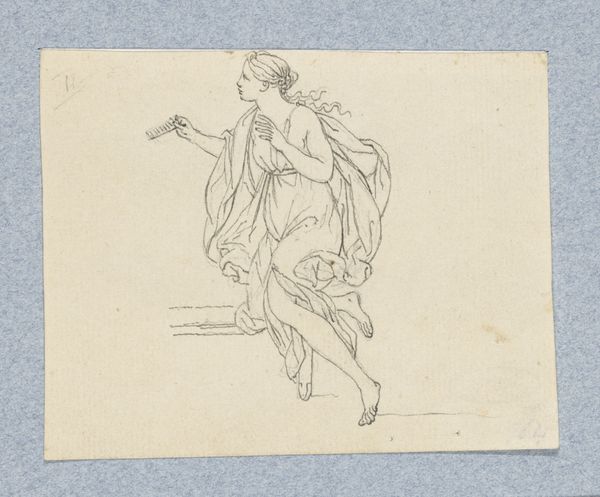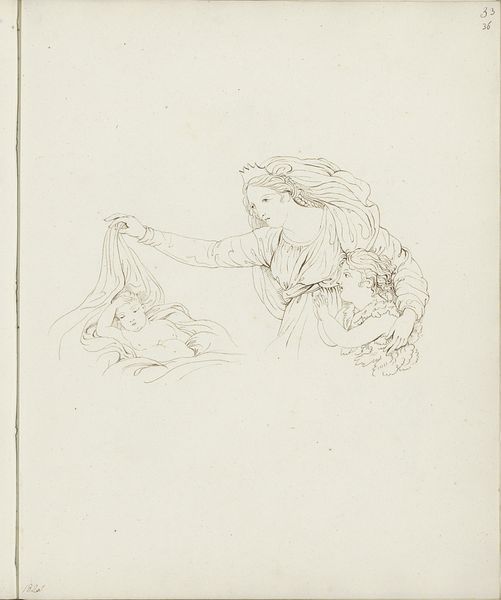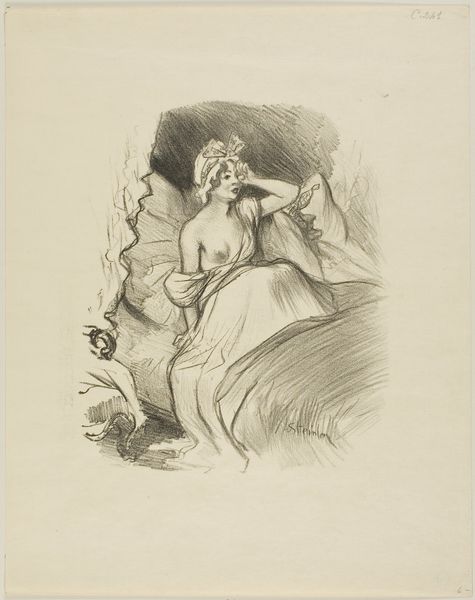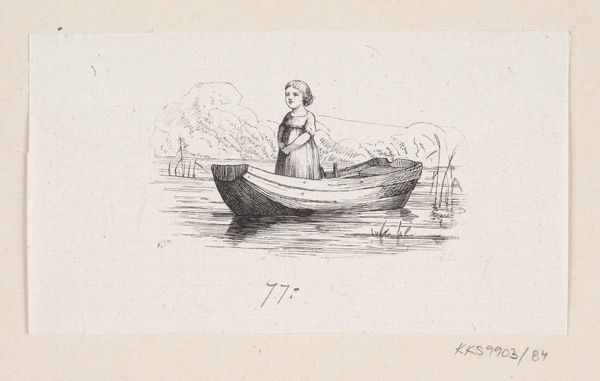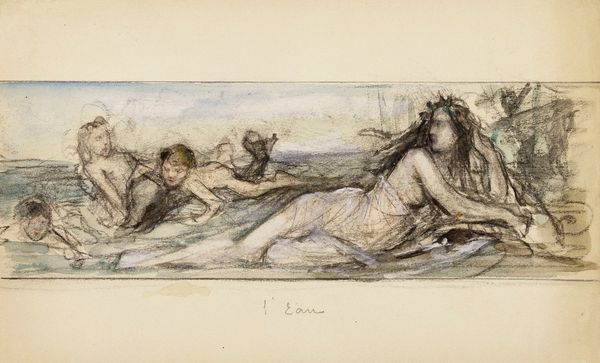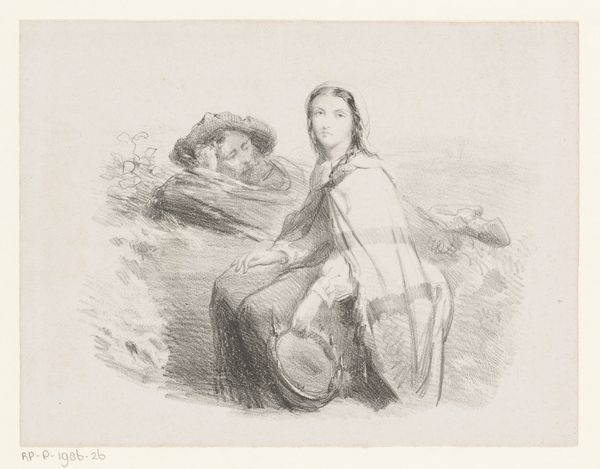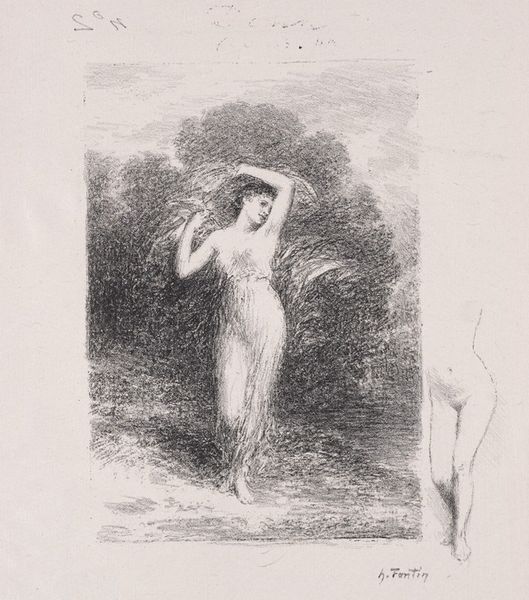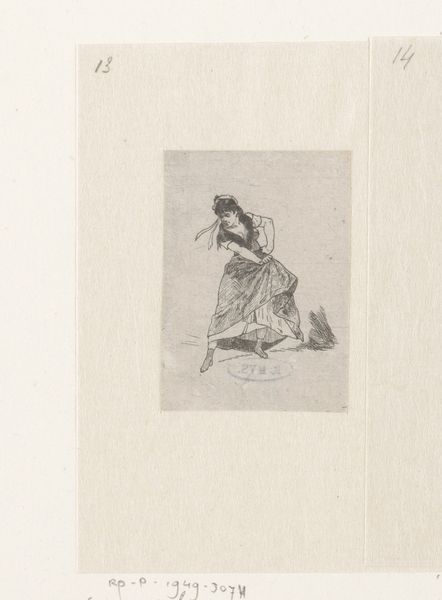
Illustration til "Den lille Havfrue" i H.C. Andersen, "Eventyr og Historier", Bind 1 1870 - 1873
0:00
0:00
Dimensions: 65 mm (height) x 106 mm (width) (bladmaal)
Curator: This delicate etching by H.P. Hansen, circa 1870-1873, is an illustration for Hans Christian Andersen’s “The Little Mermaid." Editor: It strikes me immediately as having a somber mood, almost melancholic. The stark lines, the limited tonal range... it creates a sense of quiet desperation. Curator: Indeed. Notice how the etching technique allows for a remarkable level of detail. The meticulous cross-hatching builds up the tonal variations to describe the mermaid's form as she emerges from the water, her wistful gaze fixed on a butterfly. Editor: But look closely at those reeds! They're aggressively vertical, like bars—meticulously rendered, but also imposing. How the physical act of repeatedly scoring the plate would emphasize that division between her world and the air. Curator: The composition certainly contributes to that reading. There is a clear juxtaposition between the flowing lines of the mermaid’s hair and the sharp, angular reeds, furthering that visual tension. We also cannot neglect the butterfly, a classical symbol for transformation, adding another layer of signification. Editor: And speaking of labor, think of the printmaking process: the acid etching biting into the metal plate, the repetitive printing for mass consumption alongside Andersen's text... it emphasizes this commodification of both folklore and the female figure. That's labor intensive and not readily repeatable in, say, oil painting. Curator: Very true. The scale is also quite intimate, which intensifies the viewer’s connection to the solitary figure. The economy of line contributes to its emotional power, rendering visible what remains unspoken. Editor: For me, focusing on the materials of Hansen’s labor provides a richer, embodied encounter than simply labeling it "Romantic." I am thinking through his actions. Curator: I appreciate your contextual perspective, especially when considered alongside the intrinsic pictorial strategies. Editor: Thank you; your insightful analyses focusing on Hansen’s careful composition deepens my appreciation, too. I leave here thinking that an encounter with "fine" art should involve its materiality, its messy processes of creation, not some idealized aesthetic object.
Comments
No comments
Be the first to comment and join the conversation on the ultimate creative platform.
